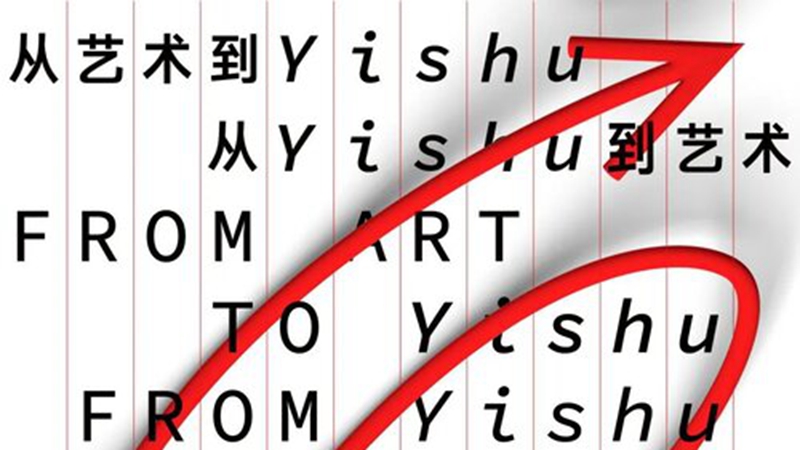Inside-Out Practice|Series of interviews with authors from Yishu #13

Martina Köppel-Yang
Dr. Martina Köppel-Yang is an independent scholar and curator. She works in the field of contemporary Chinese art since the mid-1980s and has written extensively on the subject. Her PhD thesis Semiotic Warfare-The Chinese Avant-garde 1979-1989, a Semiotic Analysis (Hong Kong: timezone 8, 2003) is a reference book on the Chinese art of the 1980s. She is a member of the advisory board of Asia Art Archive (Hong Kong).
Her exhibitions include, Leased Legacy. Hong Kong 1997 (Frankfurt 1997), Infiltration: Idylls and Visions (Guangdong Museum of Art, Guangzhou 2006), Surplus Value and Accumulation-Canton Express (Tang Contemporary, Beijing, 2006), Ink-Life-Taste of the 5th Shenzhen International Ink Painting Biennale (Shenzhen, 2006), Onda Anomala part of Manifesta 7 (Trento, Italy 2008), and Becoming Intense, Becoming Animal, Becoming …(Heidelberg University 2009), Advance through Retreat (Rockbund Museum of Art, Shanghai 2014), The Writings of Today are a Promise for Tomorrow-Yangjiang Group (Palazzo Morosini, Venice, 2015), 7+1 Luckily you are here (CIGE, Beijing 2015), Heimat – The First Guang’an international Field Art Biennial (Guang’an, 2018), 3 Souls 7 Spirits – Yang Jiechang, Shanghai Minsheng Museum (Shanghai, 2019), Format Exchange: Aljoscha and Tian Dexi, AsiaNow (Paris, 2020).
1. What is your story with Yishu journal? When did you start writing for Yishu?
I started writing for Yishu from its beginnings on. The connection is Zheng Shengtian Laoshi, who invited me to be part of the project.
2. How many articles have you published in Yishu? What are they about?
Maybe about seven. I was writing more regularly in the early years of Yishu. I wrote about different topics related to my research interests, not exhibition reviews.
3. Why do you choose to write for Yishu? In what ways do you think Yishu distinguishes itself from other art journals? What is particularistic about Yishu?
There are several reasons, why I write for Yishu:
1) it is specialized in my field of research
2) it is an independent, non-commercial journal
3) it is open-minded, gives space to young researchers and marginal topics
4. What is it like to work with Yishu’s editors?
It was smooth and professional.
5. What is your research area? What have you been working on recently?
I have been curating several exhibitions in the last couple of years. My research area did not change: my interest is still the connection of contemporary art, artistic strategies and cultural politics.
6. The inaugural issue of Yishu in 2002 posed a series of questions to prominent art practitioners in Chinese contemporary art. Now that Yishu has arrived at its milestone of 100 issues, we’d like to pose some of these questions to you: What are your thoughts regarding the situation of art and culture in China today? What does Chinese art and culture mean to you? What does “China” mean to you?
Well, “China” means a lot to me, in the different meanings of this expression.
First of all, China is the country of origin of my husband, this means I have family in China. Second, it is the place where many of my dear friends live, where many of the artists and art professionals live, with whom I have worked throughout my career.
I studied in China for nearly three years, when I was very young. This was from 1985 to 1987. At the time, going to China was like going to the moon. It resembled a satellite of world events, present and distant at the same time, following the Western powers, wanting to influence tides, but not yet an active agent of world events. It was a different sphere, still part of the Eastern bloc. I had the luck to witness one of the most outstanding moments in contemporary Chinese art, the 85 New Wave. The experiences I made and the encounters with artists I had at the time triggered my decision to work in the field of contemporary Chinese art. I was deeply touched by the positive energy and determination of the artists: they had nothing, often not even a studio, but they were able to change their environment, to change China with their ideas.
I believe that this kind of energy does still exist. China is one of the oldest civilizations. It has never lost its vitality. In the 1980s, the utopian concept of the modern consciousness, that was an official guideline, was a major drive in the cultural scene. In this utopian quest, typical of the 1970s/1980s and even the end of the twentieth century, China joined the world. Development was regarded not only as an economic factor, but also as an individual and spiritual endeavor. People strived for the better, not for the more. I do not want to sound nostalgic, but I believe that we need to give this kind of energy a chance, to give artists and creatives of all fields, cultural and scientific, a chance to take part in the transformation of society. Politics cannot and should not solve all the problems and challenges our contemporary world is facing. I believe that the individual is the key factor in every sustainable change, and it is the individual we have to trust to enhance and to live change.
7. What are your thoughts regarding the situation of art criticism today?
Like everything else, it needs more fantasy and less words.
8. Keith Wallace has posed a question in the 100th edition of Yishu, and we’d like to pose the same question to you: What are the most significant developments that have taken place in contemporary Chinese art in the past two decades in terms of the art produced and systems it functions within?
Interview Planning: Liu Yusi, Huang Wenlong
Interview Translation:Liu Qian
Proof-reading:Ninjia, Zhang Ligeng, Huang Wenlong
Post Editing: Liu Qian
Design: Onion


Leave a Reply